How to Create a Q&A-Style Article from an Audio File Using Glasp
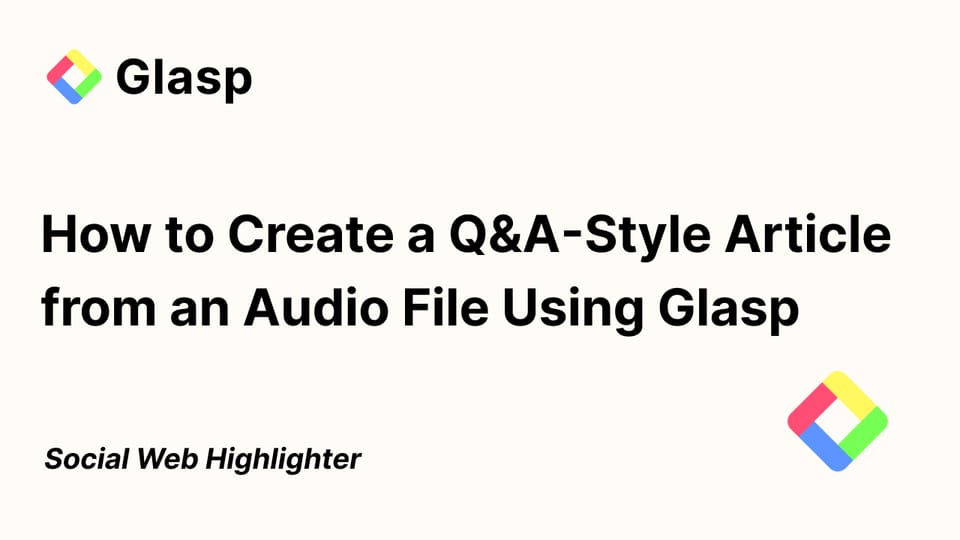
Have you ever tried turning an audio interview into a structured Q&A article? It can be time-consuming and often overwhelming, especially if you’re juggling multiple projects or deadlines. Glasp simplifies the process by helping you efficiently transcribe your audio and organize the content in a clear, Q&A-style format.
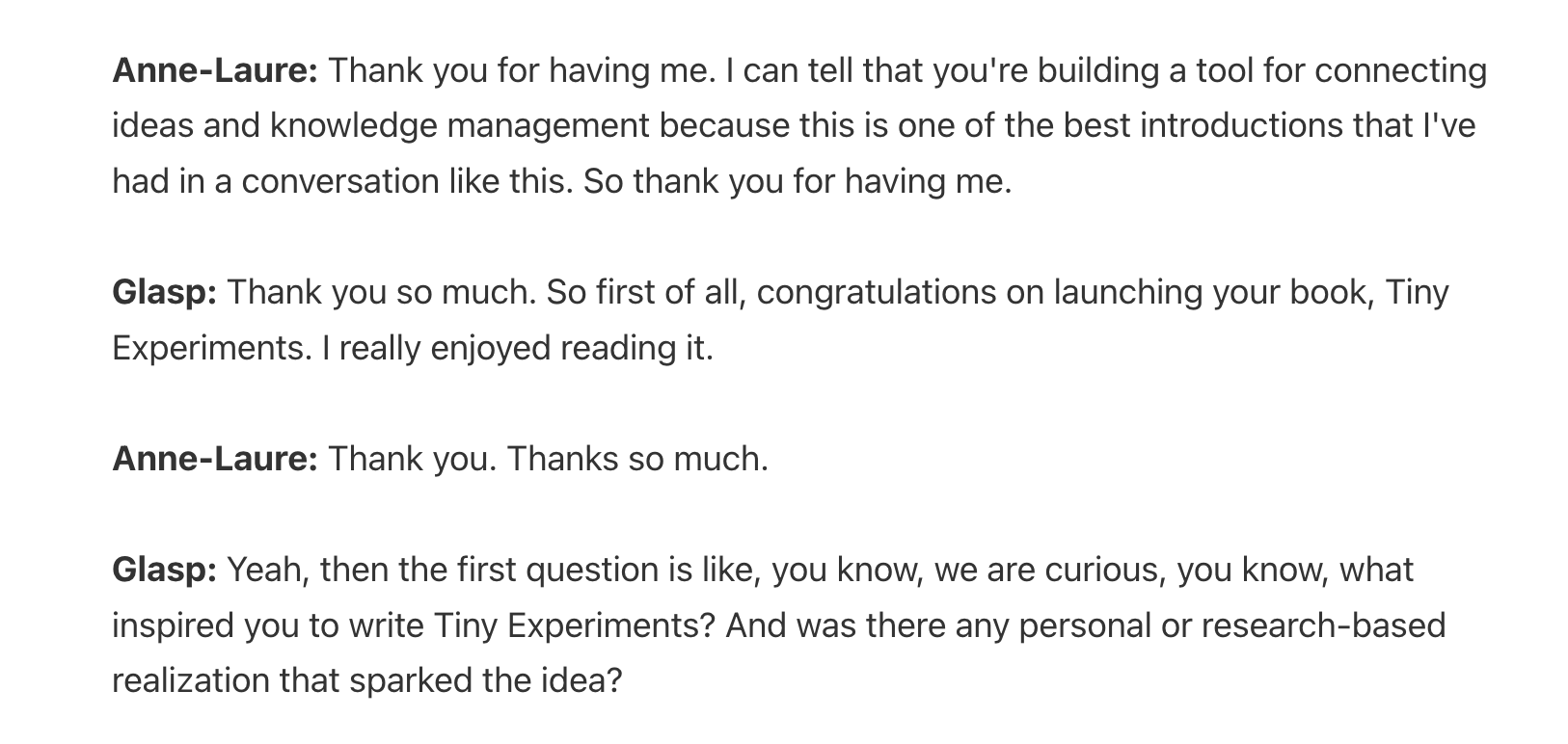
In this tutorial, we’ll walk you through each step, from uploading your audio file to polishing the final Q&A article. You’ll learn how to capture every key insight from the recording, maintain each speaker’s voice, and format it so it’s both reader-friendly and engaging. By the end, you’ll not only have an accurate transcript but also a well-crafted piece that effectively communicates the essence of the interview. Let’s get started!
Step 1: Prepare an Audio File
If you have an audio file that records the interview, please save it on a desktop. If you record with iPhone Voice Memo and if you're using a Mac, you can move the file via Airdrop. You can see the tutorial below.
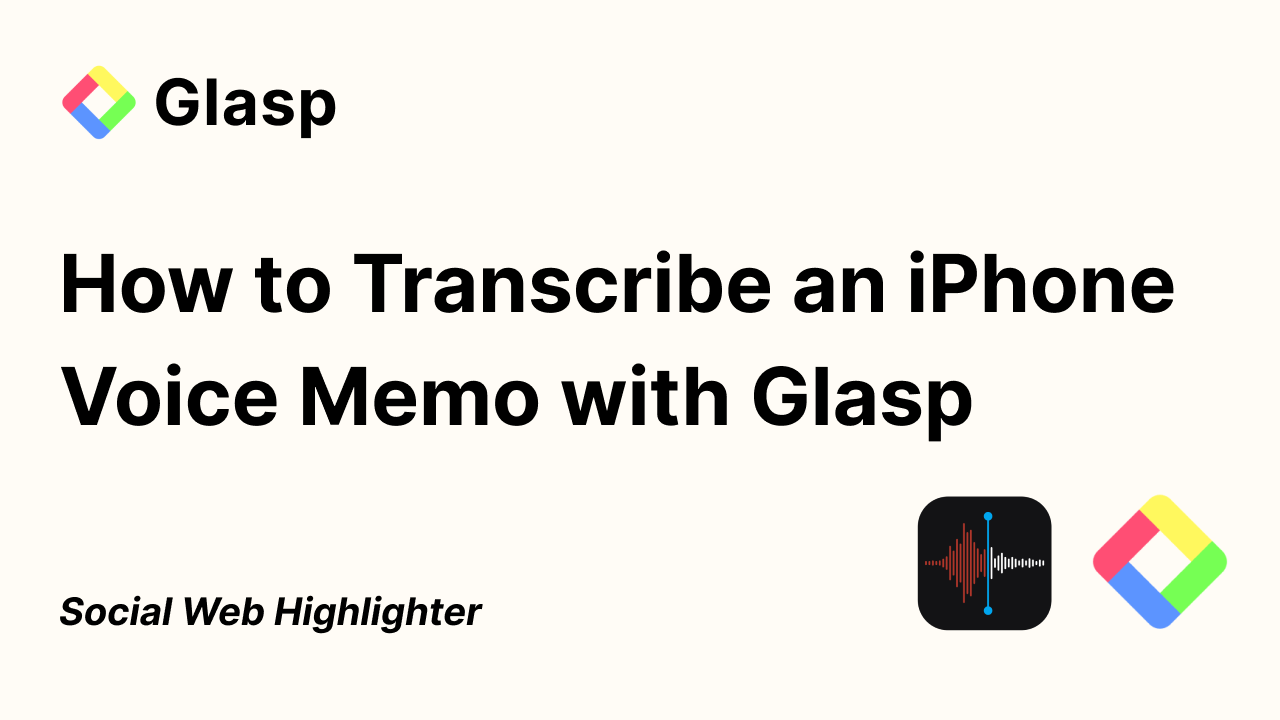
If you're using an Android mobile, Windows, or Chromebook, etc, please move the audio file with such as Google Drive, Slack, etc.
Step 2: Sign up for Glasp
Select a browser: Google Chrome, Brave, Safari, Microsoft Edge, etc.
On your search tab, type in “glasp.co” and you will be automatically directed to the Glasp page. Or access it from the link below.
Upon reaching it click “Sign up (beta)” and continue using your Google Account.
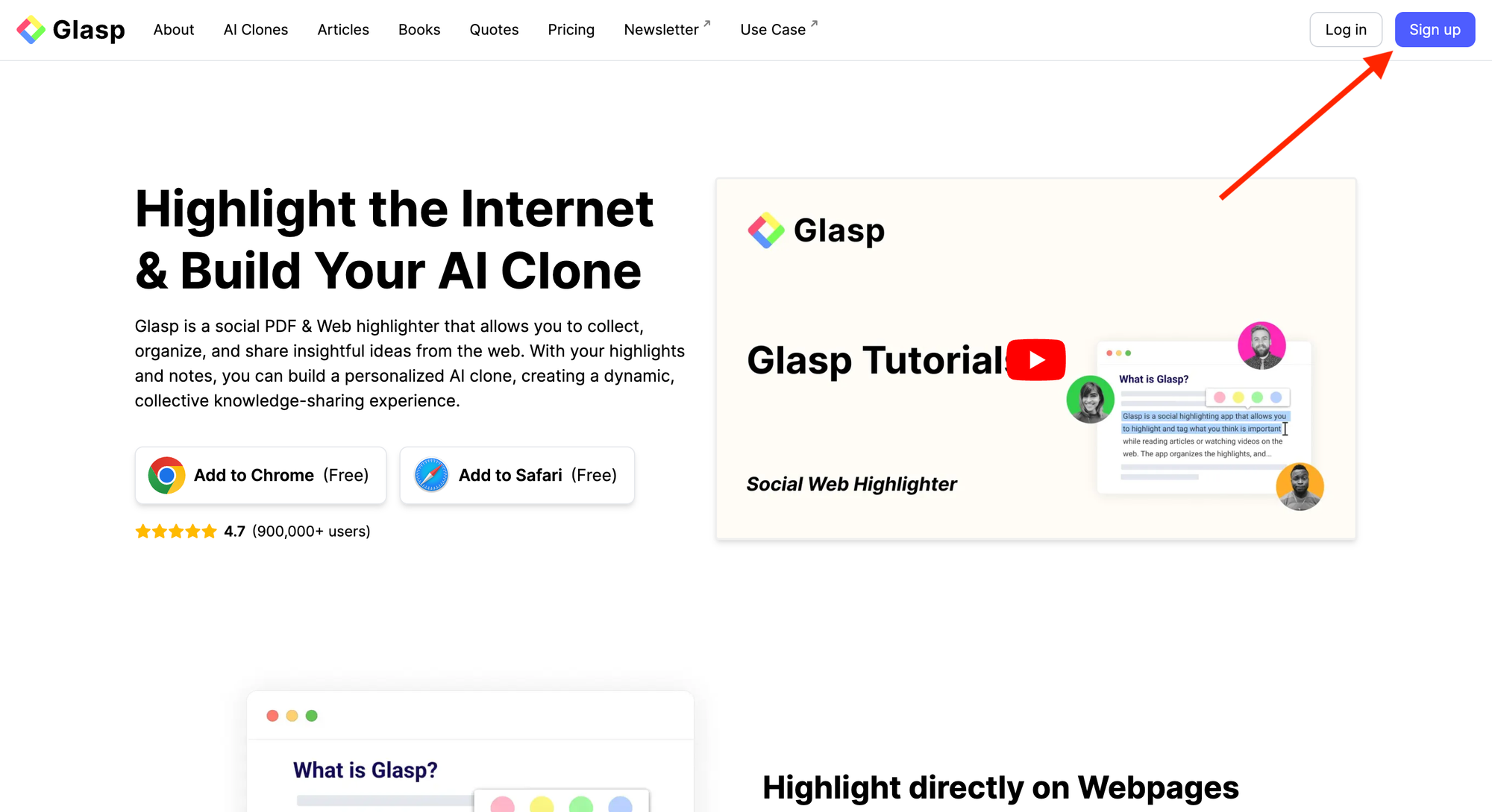
You can sign up for Glasp with either Google Sign-in or Apple Sign-in. If you're not an iPhone/iPad user, we strongly recommend you use Google Sign-in.
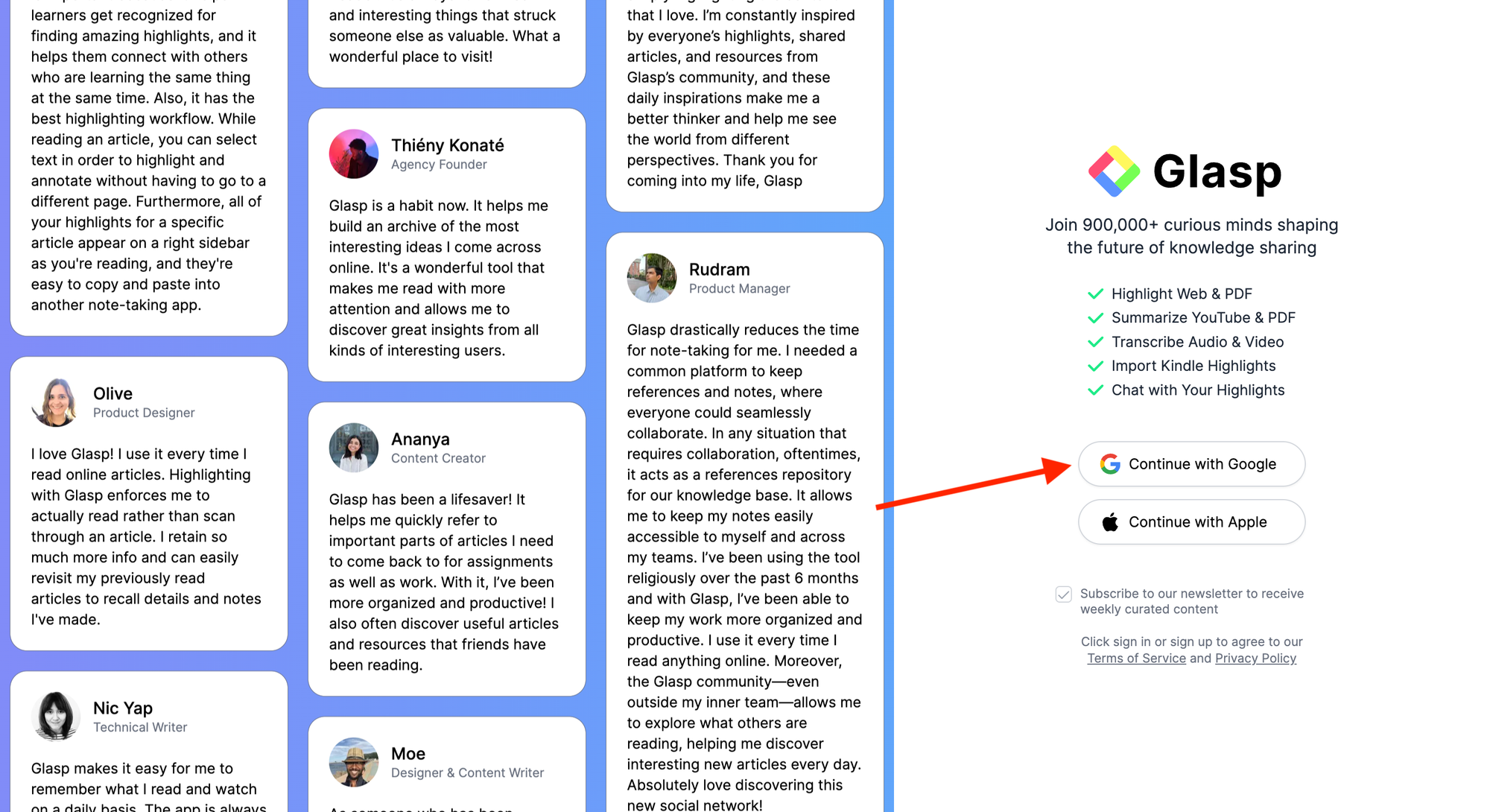
After finalizing your account, you will be redirected to the Chrome Web Store.
Step 3: Go to the Home page on Glasp
Once you have successfully created the Glasp account, you can see the Home page below. If you cannot see the page, please access "glasp.co" again.
On the Home page, you're asked to choose your favorite topics. Choosing your topics could be a leap step as this will help you identify the articles in line with your interests. And you can change your favorite topics anytime.

Step 4: Upload the Audio File to Glasp
On the Home page or the My Highlights page, you can see the + button at the right top. Then, click Upload Audio File on the modal.
It shows another modal to choose the audio file to upload to Glasp. So, please select an audio file you want to get the transcript. The maximum file size is 200MB. It accepts audio files in these formats; mp3, mp4, mpeg, mpga, m4a, wav, and webm.

Click Select File or drag an audio file. Once it's added, you can click the Upload Audio File button.

Click the Upload Audio File button to upload the file.
Once successfully uploaded, you can see the screen below. Depends on the length of the audio, but it would take a few minutes to generate the transcript, so please wait until it's ready.

Step 5: Get the Transcript of the Audio File
Once the transcript generation process is finished, you can see the transcript. So, copy the transcript.
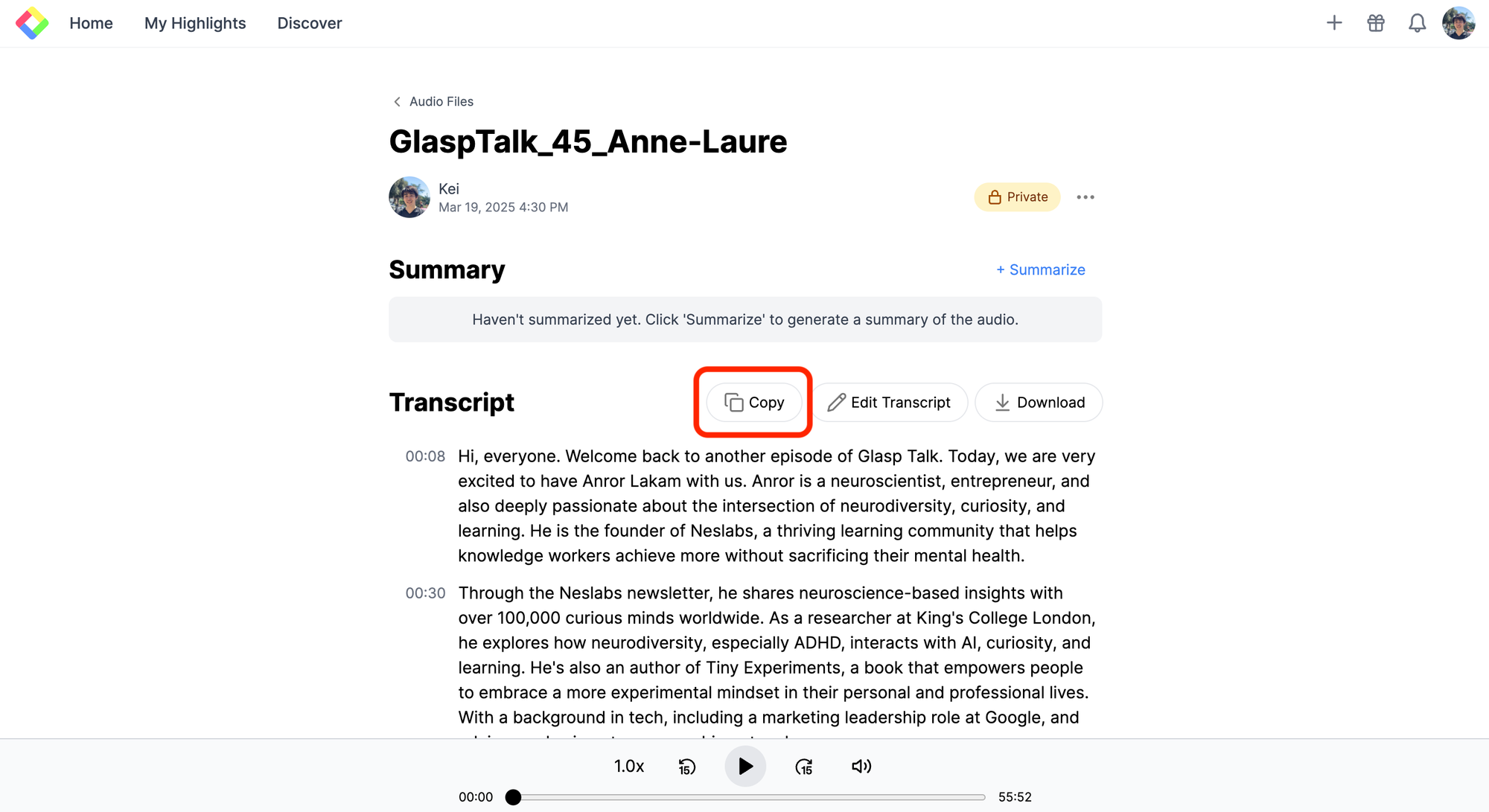
If you see typos in the transcript, you can edit it by clicking Edit Transcript.
Step 6: Open an AI Tool
Open an AI tool such as ChatGPT, Gemini, NotebookLM, Claude, etc. In this tutorial, we will use Gemini as an example.
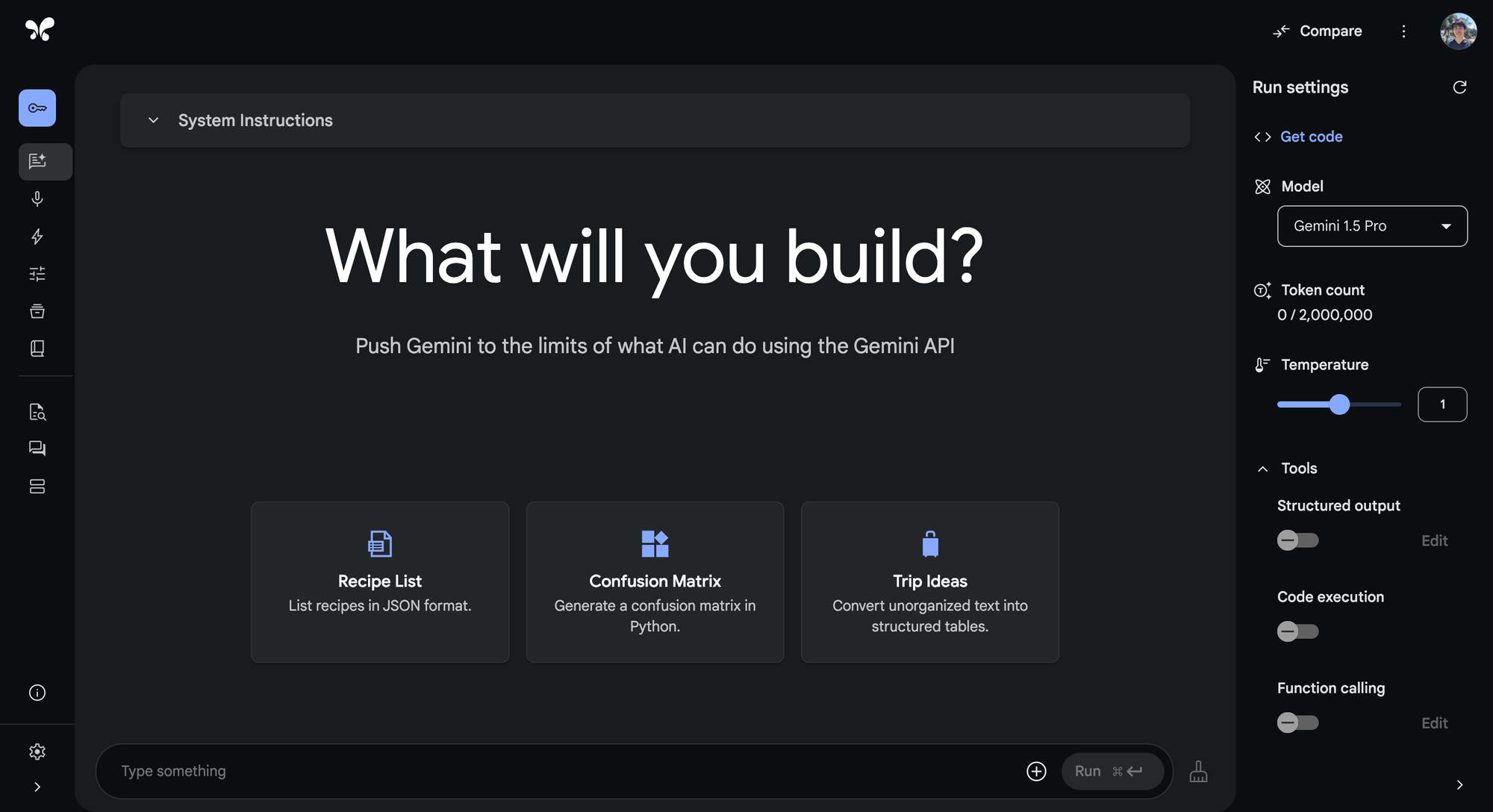
Step 7: Format the Transcript
Paste the transcript you copied on Gemini. Then, type the prompt below beneath the transcript.
Glasp: Hi
Anne-Laure : Hello
This prompt is just an example. Please modify it depending on the output. FYI, we explicitly mention Do not summarize nor remove the transcript. Use the full transcript . This is because AI tools tend to summarize or remove long transcripts.
If you can successfully format the transcript, you can see a Q&A-style output like below.
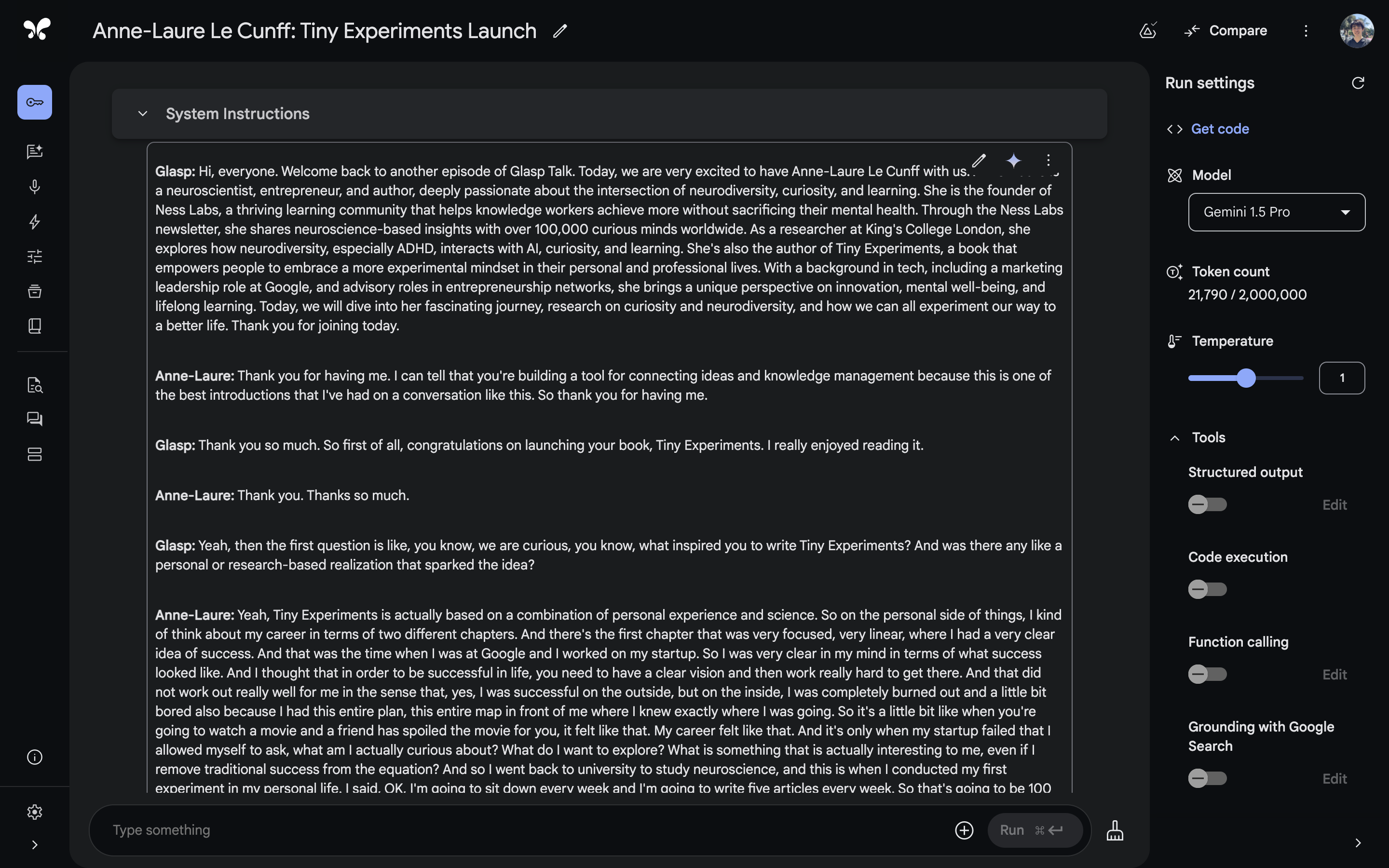
Please copy and paste the formatted transcript on an article draft. If you want to modify the formatted transcript, please do so before publishing.
Isn't it easy? With Glasp and an AI tool, you can easily write a Q&A-style article from an audio file.
Before you leave
If you have any questions, please look at the FAQ or message us.
👉 FAQs
👉 Slack
See you next time,
Glasp team
—

